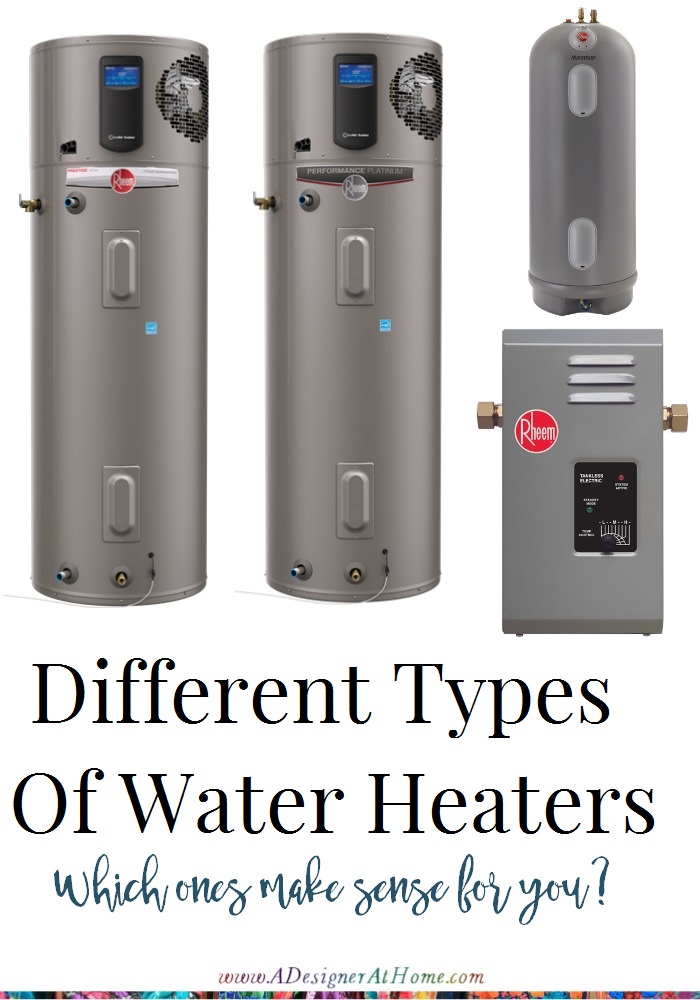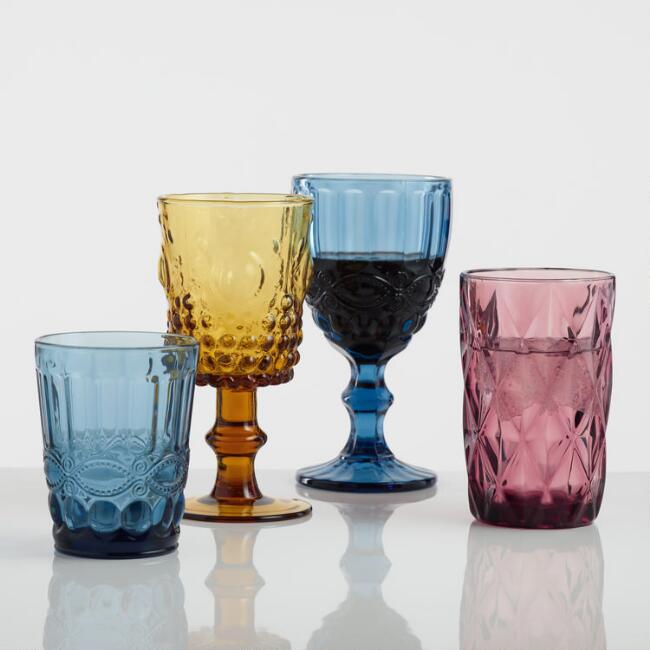

One thing that living through the replacement of a major system component teaches you is that there are more options than you’ll ever want to thumb through. That’s what happened to us when we made the tough decision to prioritize upgrading (and relocating) our hot water heater. At the end of the day, we’ve been wildly satisfied with the decision, but initially it wasn’t so fun. Decision making has never been all that fun for me. But maybe my discomfort can bring you comfort.
This post is part of a 12 month collaborative partnership between Rheem and A Designer At Home. All thoughts, opinions and experiences are my own.
The first category of Hot Water heaters are the ones most of us are familiar with. And that’s the “Tank-Type.” The concept is simple, you have a tank, filled with water, that’s constantly heated and ready for use. Within this category you’ll find Hybrid Electric, Gas Tank-type, and Electric Tank-type. Gas is run on natural gas. Electric is run on electricity. The Hybrid Electric uses a fan, filter, eco-friendly refrigerant and condenser system in conjunction with electricity. This video from Rheem explains it much better than I could without blatantly transcribing everything the narrator says. Basically, it’s really cool technology that equals a lower energy bill.
And then as the movement towards eco-friendly living gained popularity, a lot of us became familiar with tankless water heaters. They don’t heat water continuously, but rather only when water is demanded. Within this catergory, there’s the Condensing Tankless, Mid-Efficiency, and Electric Tankless. Electric is easy as it’s run on electricity. The Mid-Efficiency line are the gas powered tankless water heaters. The one I’d never heard of before is the “Condensing Tankless.” The technology behind why it’s more efficient is something I don’t fully understand, but I did find this youtube video that explained it a bit and I’d recommend you check that out. The very basic thing to understand is that it uses the natural gas more efficiently than the mid-efficiency models.
And then there’s kind of the miscellaneous two offerings: Point-of-use Water Heaters and Solar Water Heaters. Point of use provide hot water at the source. So you could put it under a single sink and it would heat water for that one location. They’re especially useful for additions or separate structures on a property where you’d want to avoid running extra line to attach it to your main water heater. Solar water heaters are really cool. They’re exactly what they sound like, water heaters connected to solar panels that charge with sunlight. They’re cool, but very expensive- cost is definitely something to consider especially when thinking about how long you’ll be benefitting from the expense.
The decision between electric and gas is fairly easy. If you’re replacing a current unit, it’s easiest to continue with what you’ve been using. If you’re moving a unit, the upfront cost to run electric versus running pipes for natural gas could play a factor. Choosing between a tank-type versus tankless is something you may want to discuss with your contractor. There were reasons why it was better for us to go with a tank-type, but there’s a multitude of factors you need to contend with if you’re going to be choosing between the two. Definitely consult with a professional before making a purchase. The absolute worst thing you could do is drop a couple thousand dollars on a unit that will cost even more to get installed. Know what power you have available, know what the location of the unit can hold, know your options so you can ask questions.



